When we started Light Stalking, it was for no other reason than that we liked taking photographs and learning how to do that in a better way. While we always appreciated the role that photographers played in keeping a vibrant democracy informed, we weren't really informed of the trials that photographers go through in undertaking that job, other than the occasional incident or anecdote. The growing popularity of Light Stalking has meant a greater exposure to those people who don't really see photography as having a legitimate role in strengthening a society and some who are downright hostile to the idea.
Perhaps that's an informed decision or perhaps it's them reacting to specific cases. Either way, it got us thinking about the very real debt that free societies owe to photographers.
Photographers have traditionally had to put up with abuse from those who either didn't want their photograph taken or didn't want some other thing exposed to a wider audience. The cases of photographers being unjustly or illegally interfered with while going about their perfectly legal profession or hobby have grown exponentially in the last decade too. This article is for them.
In almost every photo in the following collection, the photographer has made somebody very uncomfortable and, in almost every case, provoked a hostile reaction from an individual, group or segment of society. And in every case, the photograph in question has had a positive and lasting effect on society.
Saigon Execution by Eddie Adams – The Photograph That Helped End a War
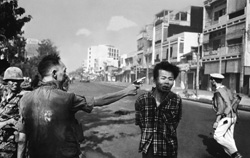
One of the photographs that helped sway public sentiment against the Vietnam War, this image was taken in 1968 at the beginning of the Tet Offensive. The image depicts Brigadier General Nguyễn Ngọc Loan of the Republic of Vietnam National Police executing Nguyễn Văn Lém of the Viet Cong.
The image itself is so indelibly marked on the conscience of society that few people even realise that video of the event also exists. It is used in a massive amount of texts on the Vietnam War and is often cited as a demonstration of the injustices perpetrated by American allies in the south.
While it is undoubtedy Eddie Adams' most famous photograph, Adams was not comfortable with it, once saying “The general killed the Viet Cong; I killed the general with my camera. Still photographs are the most powerful weapon in the world. People believe them; but photographs do lie, even without manipulation. They are only half-truths. … What the photograph didn't say was, ‘What would you do if you were the general at that time and place on that hot day, and you caught the so-called bad guy after he blew away one, two or three American people?”
Face Off at the Oka Crisis by Shaney Komulainen – The Photograph That Stopped a Land Grab
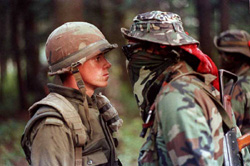
The rights of Canada's first people were brought into the spotlight in 1990 when the Oka Crisis brought land developers and government into conflict with the local indigenous population of Oka in Quebec.
The local council and developers were attempting to expand a golf course onto land that had a long and involved history of conflict between the native peoples of Oka and the European inhabitants. The story made international news and highlighted many injustices faced by Canada's first people including the fight for recognition of their rights to land that they traditionally used.
The defining image of the crisis was this one of a soldier and Mohawk warrior facing off which highlighted the lengths to which the native people were willing to go to stop encroachment – standing up to the military.
The event lead to various changes in the law and processes in Canada to help prevent such occurrences, as well as local and international support for the cause of Canada's first people and some of the more obvious injustices that they faced.
1968 Mexico Olympics Black Power Salute by John Dominis – The Photograph That Brought the Civil Rights Movement to the World

Six months after the assassination of Martin Luther King, the 1968 Olympics in Mexico saw the most overtly political statement in modern Olympic history when African American athletes John Carlos and Tommie Smith made the raised fist sign on the medal podium with Australian athlete, Peter Norman wearing a Olympic Project for Human Rights badge in solidarity with the two Americans.
While all three athletes were later shunned by their athletic establishments as a reprimand, none ever recanted their actions which, with time, came to be seen as one of the most significant protests of 20th century race relations.
“If I win, I am American, not a black American. But if I did something bad, then they would say I am a Negro. We are black and we are proud of being black. Black America will understand what we did tonight,” said Tommie Smith.
The athletes have since become standard bearers of putting beliefs before personal interests and the photograph remains an iconic reminder of their stand.
Fire on Marlborough Street by Stanley J Forman – The Photograph That Saved Lives with New Fire Safety Regulations
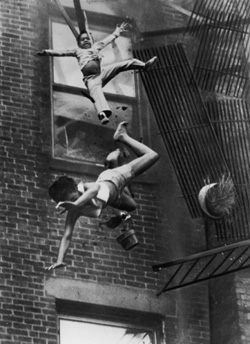
In 1975, photographer Stanley J Forman grabbed a ride with a fire truck responding to a report of a fire in Marlborough Street in Boston. He arrived in time to capture one of the most heart-rending images in the history of photography – a woman and child falling 5 stories from a shoddily-built fire escape. Reportedly, this happened just as the firemen's rescue ladder reached them.
The woman was pronounced dead at the scene and the child ended up surviving (her fall was apparently cushioned by the woman).
The photograph went on to win a Pulitzer Prize in 1976, but more importantly it catalysed the call for stronger fire regulations across Boston and the USA thereby saving potentially thousands of lives in the decades since.
Checkpoint Girl by Chris Hondros – The Photo That Solidified the Public Against the Invasion of Iraq
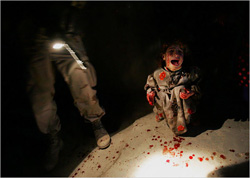
Possibly the single most powerful image to emerge from the 2003 Invasion of Iraq, Checkpoint Girl was captured by photographer, Chris Hondros at the height of the fighting in 2005. It shows a terrified young girl spattered with the blood of her parents after they were shot by US soldiers at a checkpoint.
While the war was never very popular with the public, this image crystallised its horror in the imaginations of many across the world and helped pile extreme pressure on the US and allied governments to improve the terrible situation. How successful that might have been is debatable, but this photograph at least, played a large role in turning public support.
Chris Hondros, the photographer, was killed while photographing the Libyan uprising in 2011.
Segregated Water Fountain by Elliot Erwitt – The Photograph That Was the Beginning of the End for Segregation
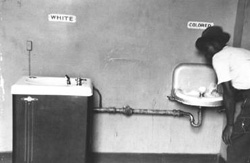
As a prelude to the civil rights movement of the 1960s, this simple 1955 photograph by Elliot Erwitt brought into stark focus the injustices suffered by the African-American population of the US. Unlike a lot of the other photographs in this list, it doesn't capture a dramatic moment or have dramatic visual appeal – it's simplicity and the mundanity of the subject matter give this image its strength and show how ingrained discrimination was into daily life.
The image is almost synonymous with the beginnings of the civil rights movement that was at its peak a decade later in the 60s. It's strength lies in its simplicity and the undeniable character of the subject. The discrimination depicted in the photograph is immediate and unmistakable and became a powerful display for civil rights campaigners in getting their message across.
Famine in Karamoja, Uganda by Mike Wells – The Photograph That Put Famine on the Political Agenda
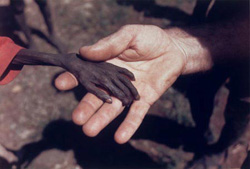
This simple yet amazingly powerful image of the hands of a starving child and missionary holding hands. This photograph was only the second photo depicting African famine to win a World Press Photo of the Year award. It is also arguably a leader as the most defining piece of media of all time to draw attention to famine in Africa.
With several African famines from the late seventies through to the mid eighties, images like this, as well as efforts such as the Band-Aid concerts brought massive media coverage to the issues facing Africa and firmly held aid in the spotlight as part of the political agenda. A brief look at aid figures show a halt in the decline of development aid at this time, despite it later trailing off from the late eighties to the present day.
———-
The photographs above are all profound and all had a lasting and positive impact on the way society progressed. From galvanising opposition to war through to getting governments to change their policies for the better, they all played their part. But in no way is this an exhaustive list. Photographs that make this list are famous but there are tens of thousands of photographs that never make it onto lists like this, but still effect change. Photography and the women and men who produce it create a net positive for society in general.



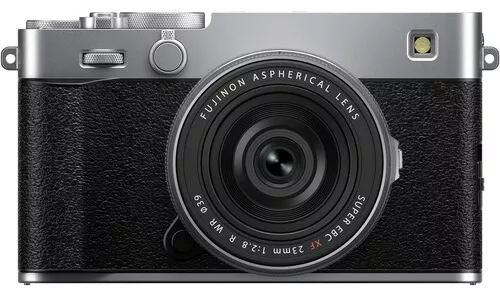
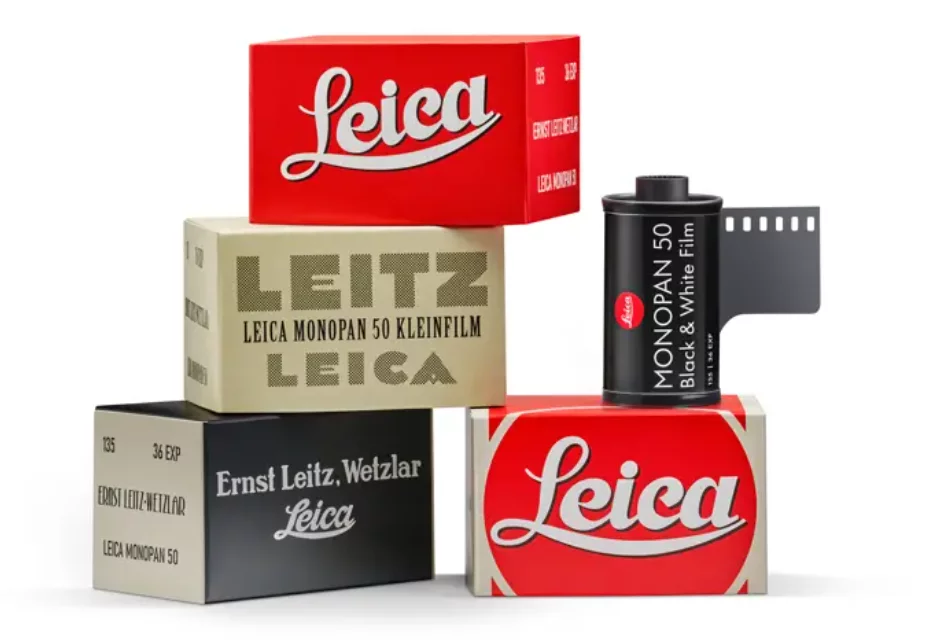

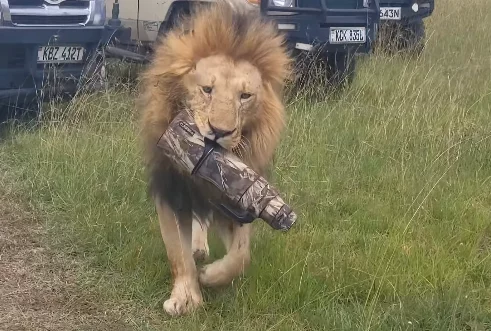
40 Comments
Im almost 40 and Ive never seen these photos in my life haha How are these supposed to be so prolific?
Go into the photography sections of any bookstore anywhere in the world and you’d have a good chance of seeing at least a couple of them. Seriously, not sure how to respond to that comment.
You might want to do some studying. I’m 27 and I’ve seen all but one of those pictures before I even graduated from high school.
Well, in defense, for folks 30 and younger, if it hasn’t been on Facebook or YouTube as a video they probably haven’t seen it.
No excuse, if you are a student of photography and you haven’t seen any of these, like Lincoln says, you have some studying to do. I sometimes worry about the current generations depth of thinking.
Prolific isn’t the word you’re looking for, honey.
I’m 37 and have seen them all. What a closed little box you must live in.
And “prolific” is not a word I would chose to describe these photos. But then again, they probably don’t have dictionaries in closed little boxes.
We want our thumbs! (Bill Hicks)
Erm would probably recognize images of Kim Kardashian or Beyonce and consider them “prolific”…
So…….Erm. I’m not a bit surprised that you have never seen these images. That would require real interest in photography, which would lead you to an actual investigation of what real photographers were doing BEFORE you bought your P & S.
Here are several other strong possibilities…….
1. You definitely don’t get out enough
2. You’re a video game addict since Frogger came out and have no sense of reality
3. You’re an IT guy who just bought a digital camera because you’re into anything electronic.
4. You’re suffering from the One-D-Ten-T syndrome
Great article, but the pictures are kind of small, especially so since they’re the subject.
These are great photos; you did a good job here. The “Napalm Girl” shot of Phic Le may have been more imp’t than “Man Shot in Head” at the time, but all-in-all, this is great
As heart wrenching as the image of the little girl was, the execution was definitely had the most impact on the American public. The little girl was a victim of the everyday action. The execution was a cold blooded murder. The little girl (who recovered from her wounds BTW) is an amazing image, but the American public wasn’t “shocked” by the image. The image of the Viet Cong rebel at the instant of death was a huge shock here at home. We were raised on John Wayne (who was a draft dodger during WWII) and believed that kind of thing would never happen during one of our wars.
I agree. Also the photograph of the woman in the tent with her chin in her hands and her child beside her, from the Great Depression, that would be another.
sorry, that is Phuc Le. The 40th anniversary story of that story is in the papers this week
Yeah – thought very hard about including that one (and it would have made it in if we went to 10 or 15 shots). It’s an amazing shot and you’re right that a very compelling argument could be made for it in a collection like this.
Very emotive. My top seven would include the self immolation of the vietnamese Buddhist monk protesting the war. Popularized by Rage Against the Machine album cover.
Yeah, that’s another one that almost made it too. It actually gets quite different to separate their impact when you have to put them side by side…
The monk you refer to was not protesting against “the war” – but that is a common mistake which some might feel diminishes his sacrifice. He was protesting against the denial of religious freedoms to Buddhists by the US-backed Catholic rightwinger Ngô Đình Diệm. Thích Quảng Đức made his protest in June 1963 – long before monks started protested against the enduring war. His act sparked a rebellion against Diem, who was overthrown by his own army, and assassinated, on November 2, 1963.
Yet you are right in that is is an extremely powerful image.
The monk committing self immolation was something I saw when I was just 13 made a tremendous impression on me. I was just out of 8th grade and had no idea. My exposure to it was a film shown on television news, not one of a number of photographs.
Funny how the popular view is a Buddhist Monk protesting the war. I saw it as a photographer and other monks aiding and abetting and probably even encouraging a suicide to support their own purposes. Was the victim of sound mind? Was he drugged? Was he a martyr or martyred?
This is such a thought provoking and heart wrenching collection of important photos. Excellent article and research.
Old enough to have seen most of them as “news”. Is it good or bad? 🙂 Photography should be taught in school as another language.
I found the whole post very beautifully written. Touching and inspiring at the same time.
Thanks,
Excellent article and makes me proud to be a photographer. It is indeed a touching post. Well done.
This is a great collection of thought-provoking images. It takes way more than knowing how to handle a camera to capture situations like this. The photographers’ bravery and stoicism should be commended.
Great collection…I remember the Oka standoff in Quebec so well. I was a working for a Tribal Council in Northern Ontario at the time and it was a huge deal for First Nations in Canada.
Thanks for putting these together.
photos like these really do make people realise the value of photography and what it can do in helping us evolve
I’ve seen all but one of these images before. The ones from the 60’s and 70’s I remember as news. May photographers ever keep speaking truth through their work.
Yes, I remember all of these. So moving (in all directions: anger, shock, despair)! An amazing walk down memory lane thanks to these photographers
Wow. A Very Well written Article on some very confronting images & thought provoking issues. I found myself shocked , angry, frustrated & somewhat humbled. Images like these remind us that we need to remember to take our blinkers off & see the world that exists beyond our front door.
W. Eugene Smith – Minamata.
I was just a boy during the Vietman war. I very vividly remember the photo “Siagon Eecution” from way back then. It haunted me. It was then that I realized how cruel man could be.
I found all these incredible pictures. The only I have questions about (whether it really belongs there) is the one about Oka. I know the soldier and all the obscenities that Lasagne (the Mohawk) was spewing. I don’t think that this event is even near in significance compared to the others. This was not what the media made of it.
Very insightful article, society really owes a lot to photographers!
The Vietnamese general had just come from dealing with a massive attack on his police barracks, the Vietcong had killed his friends and colleagues and their children, some of which he was godfather to.
Many of comments are on the Vietnam war that I had suffered for years, till today!
I would also like to thank the author for this post, very interesting, and brought back memories for me for sure. I think a few of these and some mentioned by the respondents made me stay with photography all these years.
I am proud to be a photographer…….really there is more to photography……..special thanks to the author, it is very insightful
I’m 69 years old and I have seen every one of these photos. Of the millions of photos out there, you have chosen well for your list of 7. Thought provoking photos that have had a major impact on society (some of it anyway). Amazing article. Thank you.